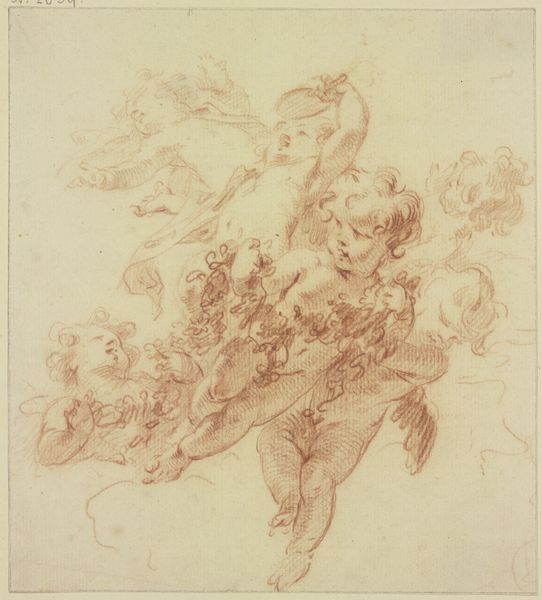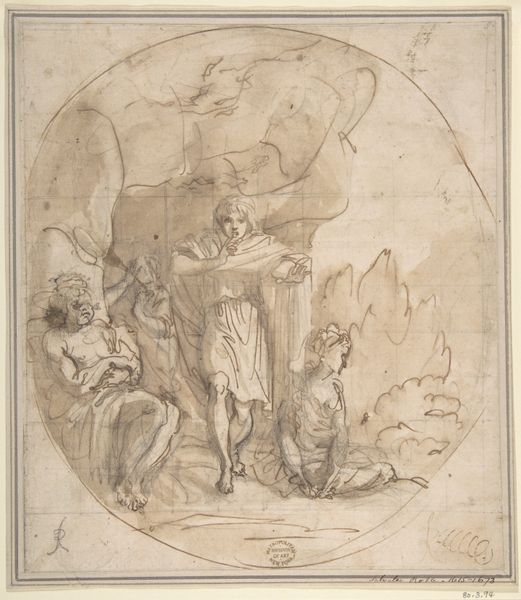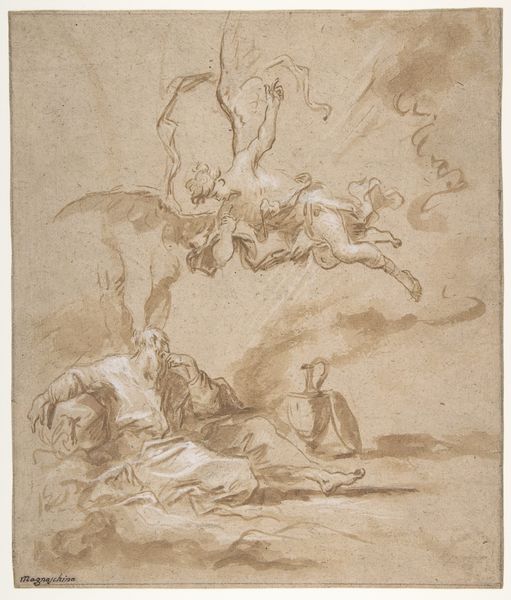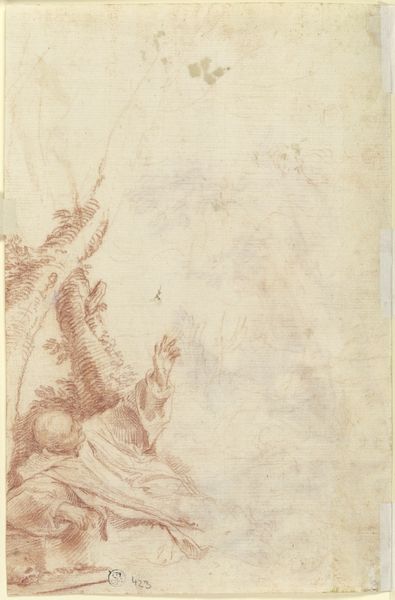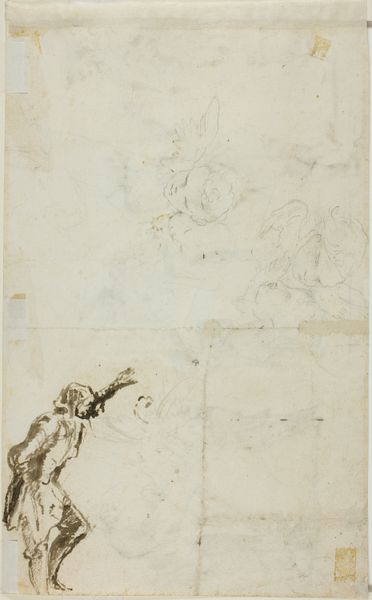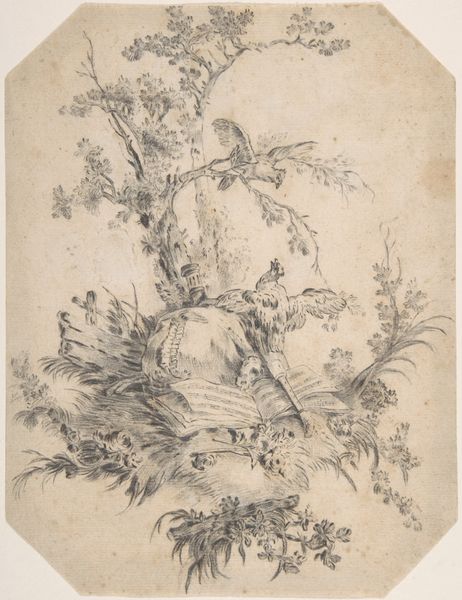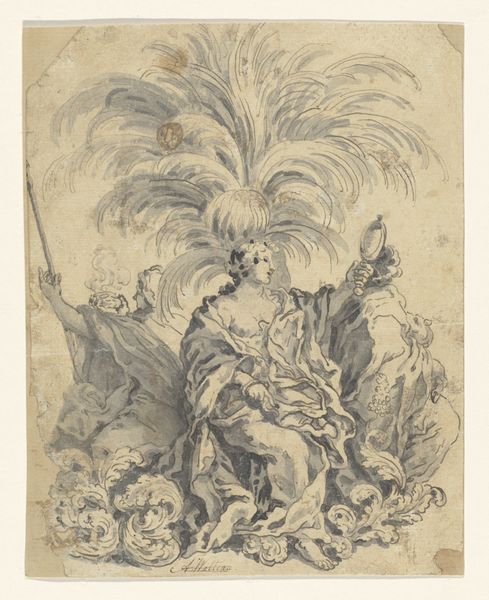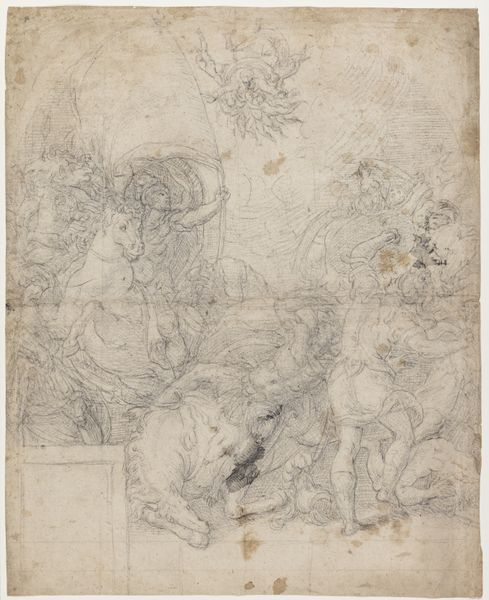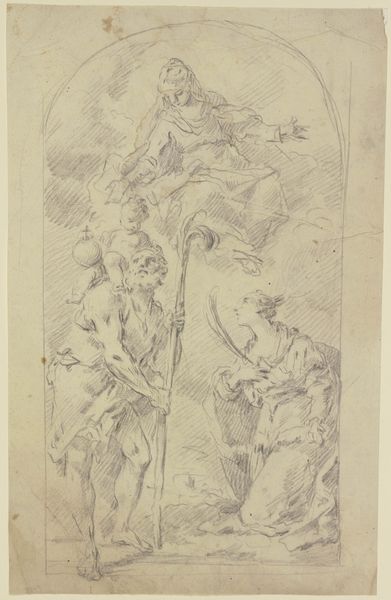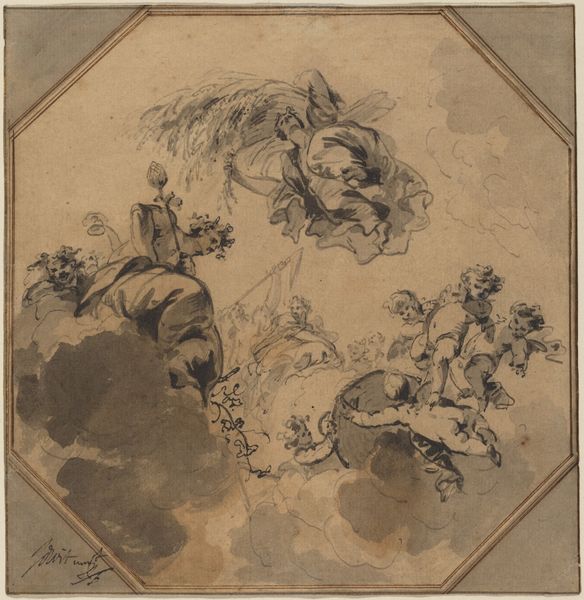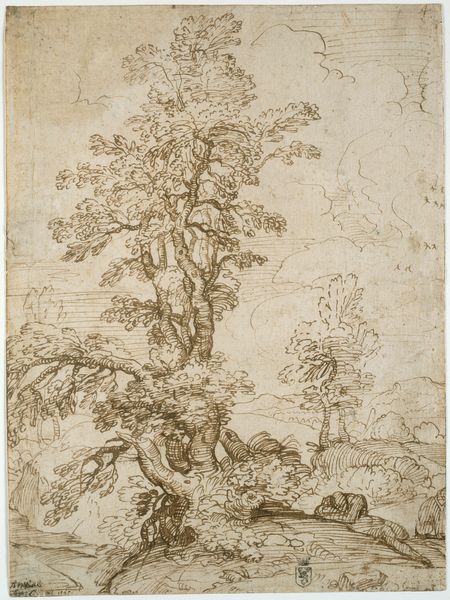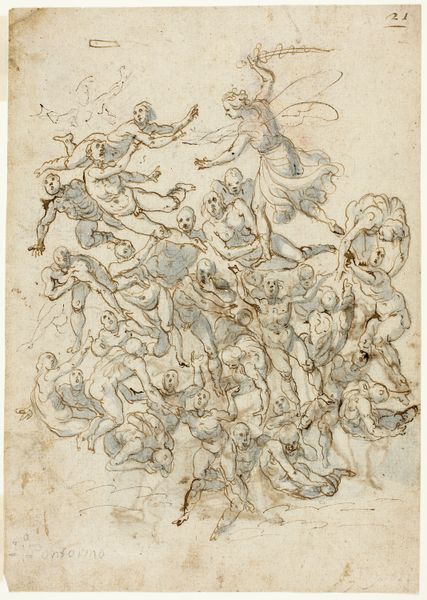
Dimensions: sheet: 45.6 x 34.6 cm (17 15/16 x 13 5/8 in.)
Copyright: National Gallery of Art: CC0 1.0
Josef Winterhalder the Younger created this drawing, "The Glorification of a Prelate," using pen and gray ink with gray wash on paper. The eye is immediately drawn to the dynamic upward movement, a compositional strategy that emphasizes the prelate's ascent. Note how Winterhalder uses line and wash to create a sense of depth and ethereal lightness. The figures seem to float, their forms dissolving into the heavens. This upward trajectory isn't merely aesthetic; it reflects a hierarchical worldview, common in the 18th century, where religious figures were elevated above the earthly realm. The drawing is a symbolic representation of power and divine favor. Through his skillful manipulation of form, Winterhalder constructs a visual language that speaks to the prevailing social and religious structures of his time. Consider how the contrasting tones of ink and wash not only define the figures but also reinforce a sense of drama and spiritual intensity. This formal contrast is crucial to understanding how art can function as a cultural artifact, embodying and communicating complex ideas through seemingly simple means.
Comments
No comments
Be the first to comment and join the conversation on the ultimate creative platform.
